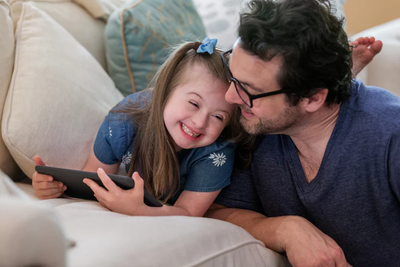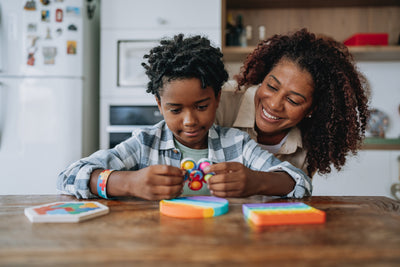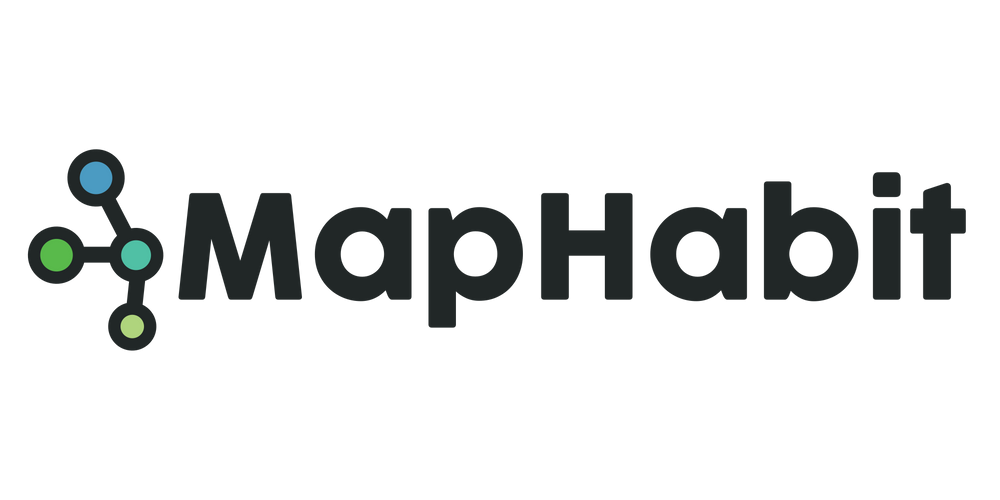The three R's of social emotional learning are Regulation, Reconstruction, and Resilience. These three skills help kids and adults manage their feelings, turn bad emotions into good ones, and bounce back from hard times. Together, they build emotional strength that helps people make friends, do well in school, and handle life's ups and downs.
Understanding Social Emotional Learning
Social emotional learning (SEL) teaches people how to handle their feelings and get along with others. Think of it like gym class for your emotions instead of your body.
SEL helps people learn five main skills: knowing yourself and your feelings, managing your emotions and actions, understanding other people's feelings, building good relationships, and making smart choices.
Research shows that kids who learn these skills do better in school. One big study found that students in SEL programs scored 11 points higher on tests than kids who didn't get this training. That's like moving from a C to a B grade.
Why Emotional Skills Matter
Your emotions affect everything you do. When you feel happy and calm, you can think clearly and work well with others. When you're upset or scared, it's harder to focus or be kind.
Kids with strong emotional skills have an easier time paying attention in class, making and keeping friends, solving problems without fighting, feeling good about themselves, and trying new things even when they're scared.
Adults with these skills also do better at work, have healthier relationships, and feel happier overall.
The First R: Regulation
Regulation means learning to control your feelings instead of letting them control you. It's like being the boss of your emotions.
What Is Emotional Regulation?
When something happens that makes you mad or sad, your brain reacts really fast. You might want to yell, cry, or run away. Regulation gives you the power to pause for a second and choose how to react.
Think about flipping a light switch. You can turn strong feelings up or down. You can also change them from negative to positive, like flipping a baseball card from one side to the other.
How Regulation Works in Real Life
Let's say someone takes your toy. Without regulation, you might hit them or scream. With regulation, you can:
- Notice you're angry
- Take a deep breath
- Think about what to do
- Use your words to solve the problem
Kids who are good at regulation can calm themselves down when they're upset. They can wait their turn without getting frustrated. They can feel nervous about a test but still do their best.
According to research, emotion regulation is a key factor that helps kids become resilient and handle tough situations. Students who practice regulation build stronger brain pathways for managing stress.
Teaching Regulation Skills
Parents, teachers, and caregivers can help kids learn regulation through:
Deep Breathing: Teach kids to take slow breaths when they feel upset. Breathing in for four counts and out for six counts calms the nervous system.
Naming Feelings: Help kids label their emotions. "I see you're frustrated" or "You look worried" teaches them to recognize what they feel.
Taking Breaks: Create a calm space where kids can go when they need to settle down. This isn't punishment it's a tool.
Practice Stories: Read books or act out scenarios where characters regulate their emotions. Ask kids what they would do in similar situations.
For individuals who struggle with emotional regulation, MapHabit offers structured support to build these essential skills.
The Second R: Reconstruction
Reconstruction is about taking apart bad feelings and building good ones in their place. It's like being a construction worker for your emotions.
Understanding Emotional Reconstruction
Not every bad feeling needs to stay bad. Reconstruction teaches you to look at a situation in a new way so you feel better about it.
This process involves breaking down negative thoughts, finding new ways to think about what happened, and building positive feelings to replace the negative ones.
Think of it like remodeling a house. You tear down the old, broken parts and build something new and better.
Examples of Reconstruction in Action
Example 1: The Failed Test
- Old thought: "I'm terrible at math. I'll never be good at it."
- Reconstructed thought: "This test was hard, but I learned what I need to study more. I can do better next time."
Example 2: The Lost Game
- Old thought: "We lost because I made a mistake. Everyone hates me."
- Reconstructed thought: "Everyone makes mistakes. My team knows I tried my best. We'll practice and get better."
Example 3: The Canceled Plans
- Old thought: "My friend doesn't want to hang out with me anymore."
- Reconstructed thought: "My friend got sick. That's not about me. We'll make new plans when they feel better."
The Science Behind Reconstruction
Research shows that the way you think about situations changes how you feel. This is called cognitive reappraisal. When you reconstruct negative thoughts into more balanced ones, your brain creates new, healthier emotional responses.
One study on emotional intelligence found that students who used positive reappraisal had higher levels of resilience. They could handle hard times better because they thought about problems differently.
Building Reconstruction Skills
You can practice reconstruction by:
Challenging Negative Thoughts: Ask yourself "Is this really true?" and "Are there other ways to see this?"
Finding the Silver Lining: Look for something good or helpful in tough situations. What can you learn? How might this help you grow?
Reframing Problems: Turn "I can't do this" into "I can't do this yet." The word "yet" opens up possibility.
Gratitude Practice: Each day, think of three good things that happened. This trains your brain to notice positive things, not just problems.
Organizations working with individuals who need support building these skills can explore organizational solutions to implement structured emotional learning programs.
The Third R: Resilience
Resilience is the ability to bounce back when things go wrong. It's like a rubber band that stretches but doesn't break.
What Makes Someone Resilient?
Resilient people don't avoid hard times—nobody can do that. Instead, they have tools to get through tough situations without falling apart.
Resilient kids and adults keep trying even when things are hard and learn from mistakes instead of giving up. They also ask for help when they need it, stay hopeful about the future, and take care of themselves during stressful times.
Think of resilience like a muscle. The more you use it, the stronger it gets. Each time you face a challenge and make it through, you become more resilient.
How Resilience Connects to the Other R's
Resilience doesn't work alone. It depends on regulation and reconstruction working together.
When something bad happens:
- Regulation helps you stay calm and not panic
- Reconstruction helps you think about the situation in a helpful way
- Resilience helps you keep going and try again
Research from Yale shows that students who participate in SEL programs feel less anxiety, stress, and depression. They also feel more connected to school and their peers. This emotional strength helps them bounce back from setbacks.
Building Resilience Over Time
Resilience grows through experience and support. Here's how to build it:
Start Small: Let kids face manageable challenges. Don't solve every problem for them. When they overcome small hurdles, they gain confidence for bigger ones.
Model Resilience: Show kids how you handle setbacks. Talk out loud about your process: "This didn't work, so I'm going to try a different way."
Create Safe Relationships: Kids are more resilient when they feel loved and supported. Strong connections with parents, teachers, and friends act as safety nets.
Celebrate Effort: Praise kids for trying, not just for succeeding. This teaches them that effort matters more than perfect results.
Teach Problem-Solving: Help kids break big problems into small steps. Ask "What could you try?" instead of telling them what to do.
For families supporting loved ones with special needs, care partner training provides strategies to build resilience alongside other emotional skills.
How the Three R's Work Together
The three R's of social emotional learning don't work alone. They're like three legs of a stool—you need all three for it to stand strong.
The Cycle of Emotional Growth
Here's how the three R's support each other:
Regulation gives you control. When you can manage your initial emotional reaction, you create space to think clearly.
Reconstruction gives you perspective. Once you're calm, you can look at the situation in new ways and find helpful thoughts.
Resilience gives you strength. With better regulation and reconstructed thinking, you can face future challenges with more confidence.
Together, these skills create what researchers call "emotional literacy"—the ability to read, understand, and respond to emotions in healthy ways.
Real-World Success Stories
Schools using SEL programs report amazing changes. Fewer fights and behavior problems happen. Better grades and test scores show up. More kids come to school every day. Happier students feel safe and included.
One major analysis found that for every dollar spent on SEL programs, schools see $11 in benefits. These benefits include less crime, better mental health, and higher earnings later in life.
Teaching the Three R's at Different Ages
Kids at different ages learn emotional skills in different ways. Here's what works best for each stage.
Early Childhood (Ages 3-5)
Young kids are just starting to understand their feelings. Keep lessons simple and concrete.
Regulation for Little Ones:
- Use feeling faces or emotion cards
- Practice "belly breathing" with stuffed animals
- Create calm corners with soft items
Reconstruction at This Age:
- Read stories about characters who feel sad or mad, then feel better
- Help kids use positive self-talk: "I can try again"
- Role-play simple social situations
Building Early Resilience:
- Let kids struggle a bit before helping
- Use phrases like "That was tricky, but you did it!"
- Teach simple problem-solving: "What could you do?"
Elementary School (Ages 6-11)
School-age kids can understand more complex emotional concepts. They're ready for specific strategies.
Regulation Strategies:
- Teach the "stop and think" method
- Use feeling thermometers to rate emotion intensity
- Practice mindfulness exercises
Reconstruction Work:
- Teach kids to spot thinking traps: "always," "never," "everyone"
- Use journals to write down feelings and new ways to think about them
- Practice perspective-taking: "How might they be feeling?"
Resilience Building:
- Assign age-appropriate responsibilities
- Encourage trying new activities
- Teach growth mindset: Your brain gets stronger when you practice
MapHabit offers specialized products for different needs. Explore options for IDD or autism support.
Middle and High School (Ages 12-18)
Teens face big emotional challenges. They need advanced tools to handle stress, peer pressure, and big life decisions.
Advanced Regulation:
- Teach teens to recognize their emotional triggers
- Introduce meditation apps or guided relaxation
- Discuss healthy coping strategies for stress
Complex Reconstruction:
- Challenge all-or-nothing thinking
- Practice reframing failures as learning opportunities
- Discuss how social media affects thoughts and feelings
Teen Resilience:
- Give teens more independence with support
- Help them set and work toward personal goals
- Create space for teens to talk about hard topics
The Science Behind the Three R's
Understanding why the three R's work helps us teach them better. Let's look at brain science.
How Your Brain Processes Emotions
Your brain has two main parts when it comes to emotions:
The Emotional Brain: This part reacts fast to danger or strong feelings. It's like an alarm system. When something scary or upsetting happens, this part fires up in less than a second.
The Thinking Brain: This is your problem-solving center. It thinks through situations and makes plans. But it takes longer to kick in about 1.2 seconds.
This timing gap is why emotions can hijack your behavior. Your emotional brain reacts before your thinking brain can help. That's where regulation comes in—it creates a pause so your thinking brain can catch up.
Building New Brain Pathways
Every time you practice the three R's, you strengthen certain pathways in your brain. It's like making a trail through the woods. The more you walk the same path, the clearer and easier it becomes.
Research shows that consistent practice of emotional skills literally changes brain structure. People who regularly use regulation strategies develop stronger connections in the parts of the brain responsible for self-control.
The Golden Mean
Ancient philosophers talked about finding balance in life—not too much emotion, not too little. This "golden mean" is what the three R's help you achieve.
With practice, you learn to feel your emotions without being overwhelmed by them and express feelings in ways that help, not hurt. You also stay balanced even when life gets hard.
Common Challenges and Solutions
Learning the three R's isn't always easy. Here are common problems and how to fix them.
Challenge 1: "My Child Can't Calm Down"
Some kids have a harder time with regulation. Their emotions feel really big, really fast.
Solutions:
- Start regulation practice when they're calm, not upset
- Make calming strategies fun: blow "birthday candles," hug a stuffed animal, count backwards
- Be patient—this skill takes time to develop
- Consider if there are underlying needs (hunger, tiredness, sensory issues)
Challenge 2: "Positive Thinking Feels Fake"
Reconstruction isn't about pretending everything is fine. It's about seeing the whole picture, not just the bad parts.
Solutions:
- Validate feelings first: "You're really disappointed. That makes sense."
- Then introduce new perspectives: "And I also notice you learned something today."
- Make it realistic: Focus on what's true and helpful, not fake positivity
- Practice with small disappointments before big ones
Challenge 3: "They Give Up Too Easily"
Building resilience takes time, especially if kids have experienced a lot of failure or criticism.
Solutions:
- Set kids up for success with achievable challenges
- Focus on progress, not perfection
- Share your own stories of overcoming setbacks
- Create a family or classroom culture that values effort and learning
Challenge 4: "I Don't Have Time for This"
SEL doesn't have to take hours. Small moments throughout the day add up.
Quick Solutions:
- Label emotions during daily activities: "You look frustrated with that zipper"
- Model regulation: "I'm feeling stressed, so I'm going to take three deep breaths"
- Use car rides or meal times to talk about feelings
- Add SEL to existing routines instead of creating new ones
How Parents and Teachers Can Help
Adults play a huge role in teaching the three R's. Here's how to support emotional growth.
Create a Safe Environment
Kids learn best when they feel safe to make mistakes. Build an environment where all feelings are okay (even if all behaviors aren't), and mistakes are chances to learn, not reasons for punishment. Adults should model emotional skills, not just teach them. Every child should feel valued and included.
Use Consistent Language
Teach everyone the same words for emotions and strategies. When parents, teachers, and caregivers use the same language, kids learn faster.
Create a shared vocabulary around feeling words (frustrated, disappointed, anxious, excited), regulation strategies (deep breathing, taking space, counting), and problem-solving steps (stop, think, choose, do).
Practice, Don't Lecture
Kids don't learn emotional skills from lectures. They learn by doing. Create chances to practice:
Role-Playing: Act out social situations and practice different responses.
Games: Play games that require turn-taking, losing gracefully, or working together.
Real-Life Coaching: When emotions run high, coach kids through the moment: "I see you're angry. Let's take a breath together."
Reflection Time: After a big emotion passes, talk about what happened and what to try next time.
Connect SEL to Academics
The three R's aren't separate from learning—they support it. Kids who regulate their emotions can focus better. Kids who reconstruct negative thoughts try harder. Resilient kids don't give up on tough assignments.
Studies show that students in SEL programs improve their grades by about 4 percentile points. The longer the program runs, the bigger the gains.
For organizations implementing comprehensive programs, MapHabit provides structured approaches to integrate emotional learning with other goals.
Technology and Tools for Teaching the Three R's
Modern tools can help teach and practice emotional skills. Here are some helpful resources.
Apps and Digital Tools
Several apps support SEL learning:
- Mood tracking apps help kids practice identifying emotions
- Breathing apps guide regulation exercises
- Story-based apps teach problem-solving
However, screen time should support, not replace, real human connection. Apps work best as supplements to face-to-face teaching.
Physical Tools and Materials
Hands-on tools work well, especially for younger kids. Try emotion wheels or faces for identifying feelings. Use stress balls or fidgets for physical regulation. Keep journals for reflection and reconstruction practice. Visual schedules reduce anxiety and build resilience.
MapHabit provides specialized tools designed for different needs. Check out the Tablet Ultimate Shine or Tablet Core for structured learning support.
Books and Stories
Stories are powerful teachers. They let kids see characters model the three R's in action. Look for books where characters experience strong emotions and learn to manage them. Characters should face challenges and keep trying. They should change their thinking when situations are hard and solve problems in healthy ways.
Measuring Progress in the Three R's
How do you know if someone is getting better at emotional skills? Here are signs of growth.
Signs of Regulation Growth
You'll notice fewer meltdowns or outbursts. The ability to calm down faster when upset appears. Kids use strategies independently (breathing, taking breaks). They talk about feelings instead of just acting on them. Handling frustration better over time becomes clear.
Signs of Reconstruction Progress
Look for more balanced thinking ("This is hard" instead of "I can't do it"). Finding positives in tough situations shows progress. Learning from mistakes instead of getting stuck on them matters. Less catastrophic thinking ("This is terrible" becomes "This is disappointing") helps. More flexible problem-solving appears.
Signs of Resilience Building
Watch for bouncing back faster from disappointments. Trying new things even when scared shows growth. Asking for help appropriately matters. Keeping a hopeful outlook helps. Taking on bigger challenges confidently appears over time.
Remember: Progress isn't a straight line. Kids will have good days and hard days. That's normal. What matters is the overall trend over weeks and months.
Special Considerations for Different Needs
Some kids need extra support with the three R's. Here's how to adapt for different situations.
For Kids with ADHD
Kids with ADHD often struggle with regulation because their brains are wired differently. They may need more frequent reminders to use strategies and physical movement breaks to help with regulation. Extra concrete, visual supports help them learn. Shorter practice sessions repeated more often work best.
For Kids with Autism
Autistic kids may need different approaches. Very clear, specific language about emotions helps them understand. Social stories that break down emotional situations step by step work well. Visual supports for abstract concepts make learning easier. Understanding that emotional expression looks different for everyone matters.
MapHabit offers specialized products for autism that address these unique needs.
For Kids with Trauma
Kids who've experienced trauma may find the three R's especially hard. Their alarm systems are sensitive from past danger. They need extra patience and understanding. Trauma-informed approaches that prioritize safety help most. Professional support from counselors or therapists makes a big difference. Recognition that behavior is communication opens doors to healing.
For Kids with Intellectual Disabilities
These kids can absolutely learn the three R's—they may just need simpler language and more concrete examples. Extra repetition and practice helps concepts stick. Visual and hands-on supports make learning clearer. Small, clear steps prevent overwhelm. Celebration of all progress builds confidence.
MapHabit provides products for IDD designed to meet these learning styles.
Beyond the Classroom: Using the Three R's in Life
The three R's aren't just for school. They help in every part of life.
At Home
Family life has lots of chances to practice:
- Sibling conflicts teach regulation and problem-solving
- Household chores build responsibility and resilience
- Family discussions about feelings create emotional openness
- Everyday disappointments (canceled plans, broken toys) offer practice with reconstruction
In Sports and Activities
Sports and hobbies are perfect for building the three R's:
- Losing games teaches resilience
- Team conflicts require regulation and social skills
- Performance anxiety needs reconstruction strategies
- Practice and improvement build growth mindset
In Friendships
Social relationships naturally involve all three R's:
- Friend disagreements need calm communication (regulation)
- Hurt feelings may need reframing (reconstruction)
- Friendship ups and downs build social resilience
Preparing for Adulthood
The three R's become even more important as kids grow up. Adults with these skills handle job stress better and have healthier relationships. They manage money and responsibilities more effectively. Better mental and physical health follows.
Long-term research shows that kids who learn SEL skills have better outcomes 18 years later. They earn more, have higher education levels, and experience less criminal involvement and substance abuse.
Final Thoughts
The three R's of social emotional learning—Regulation, Reconstruction, and Resilience—are essential skills for everyone. They help kids and adults manage feelings, think in helpful ways, and bounce back from hard times.
These skills aren't something you're born with or without. They're like reading or math—you can learn and improve them with practice. Every person can get better at the three R's, no matter where they start.
As a parent, teacher, or caregiver, you have the power to help build these skills. Through your example, your patience, and your support, you can teach the emotional tools that will help kids succeed in school and in life.
Start small. Practice one skill at a time. Celebrate progress, even tiny steps forward. Over time, these small moments of emotional learning add up to big changes in how kids feel, think, and grow.
The three R's give kids a foundation for lifelong emotional health. By teaching regulation, reconstruction, and resilience, you're giving them tools they'll use forever. That's a gift that keeps on giving, long after childhood ends.
Ready to support emotional learning in your home, classroom, or organization? Explore how MapHabit can help with structured tools and programs designed to build these essential skills. Whether you're supporting individuals or working with organizations, the right resources can make teaching the three R's easier and more effective.








